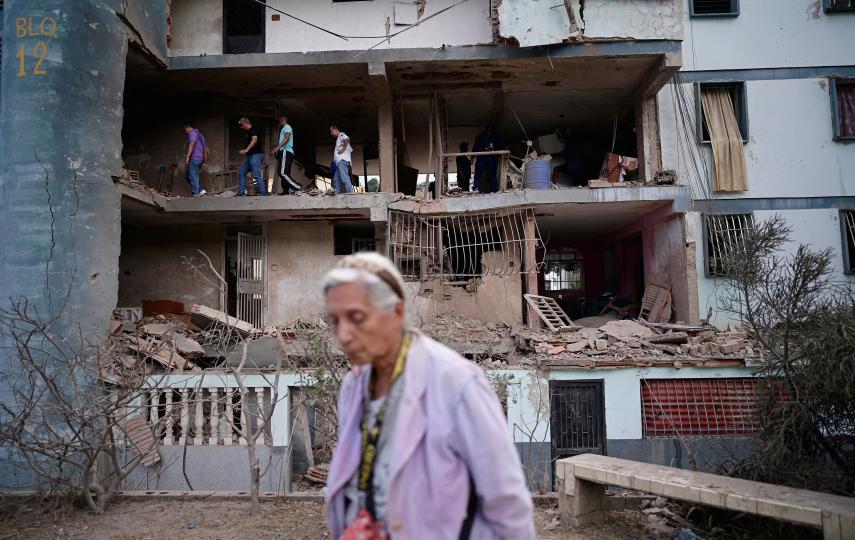PESHAWAR
Haji Jabbar, 55 years old and an Afghan refugee from Akora Khattak camp in Pakistan's North West Frontier Province (NWFP), was waiting in a hotel lobby in the provincial capital, Peshawar, to meet the Loya Jirga Commission delegation. "I am proud to participate in an effort for peace after years of fratricidal bloodshed," he told IRIN.
Jabbar and a group of the refugee camp elders were trying to figure out ways of sending their representatives for the upcoming Loya Jirga or grand council meeting. "Everything cannot be corrected in one day in our war-ravaged country; Loya Jirga will be a nice start," he said.
The Loya Jirga Commission has allotted some 40 seats to the Afghan refugees in Pakistan, of a total of 100 seats for Afghan refugees in the region and diaspora.
Jabbar and his colleagues represented some 30,000 people in the camp. Although not elected by ballot, they were community leaders with the defining characteristics for assuming leadership: known generosity, maturity, lineage and personal charisma. This is how democracy is supposed to work in their war-torn land.
A three-member Loya Jirga Commission, comprising Pohan Tahir Borgai, Zahir Khan Jabbarkhail and Seyyed Musa Tawana, is visiting Pakistan to help Afghan refugees select their representatives and to explain the process to them. In June, some 1,500 representatives from all over the Afghanistan will decide its political future in the first major event aimed at establishing democracy in the landlocked Central Asian country. All three members of the delegation had lived as refugees in Pakistan.
Explaining the process, Jabbarkhail told IRIN that in Afghanistan up to 1,050 representatives would be directly elected based on the population estimates arrived at over the past three decades. "As every refugee in Pakistan has theoretically got some representation in his area of origin in Afghanistan, these seats are a bonus and a recognition that we are not ignoring our refugee brothers," he said, rejecting the notion that refugees were under-represented in the process.
Jabbarkhail admitted that it was very difficult to reach all the more than two million Afghan refugees spread across Pakistan with sizeable populations in the NWFP and southern province of Baluchistan. The commission would depend on the information provided by Pakistan's Commissionerate for Afghan Refugees (CAR). "Based on such information, we would select some 400 people from among whom we will shortlist the 40 refugee representatives," he explained. Some 10 women would also be included in these representatives.
The delegation currently visiting NWFP will go to the federal capital, Islamabad, the southern port city of Karachi, and Quetta, capital of Baluchistan Province - all with sizeable Afghan refugee populations.
With the Loya Jirga, scheduled to meet in a few weeks' time, the daunting challenges facing the commission were illustrated by a visit to the Koga refugee camp in Buner District, some 120 km northeast of the Peshawar. A camp elder, Badshah Khan Totakhel, told IRIN that they had not been contacted by anybody for the upcoming event, but everyone knew about the process was by listening to the radio. "Peace is our first priority, and we would like to participate in making it happen," he said.
The camp has a population of some 20,000, and after more than 20 years of existence looks more like a permanent village with mud houses and a narrow bazaar along the metalled road leading to it. A new generation of Afghans has grown up in the camp and most of them have little idea about even what their country looks like.
Totakhel's grandfather, Wakil Amir Mohammad Khan, participated in a Loya Jirga in the 1930s. "Afghanistan is like a patient in comma. It has defeated death but is in deep pain," he said.
Some five million Afghans who fled death and destruction over the past two decades are now carefully weighing their options, including their prospects of return and participation in the country's reconstruction. About 300,000 have already gone home.
This article was produced by IRIN News while it was part of the United Nations Office for the Coordination of Humanitarian Affairs. Please send queries on copyright or liability to the UN. For more information: https://shop.un.org/rights-permissions




